a new circuit has been added to the underscores catalog – the lateral_led_controller – a hardware network interface for addressable led installations
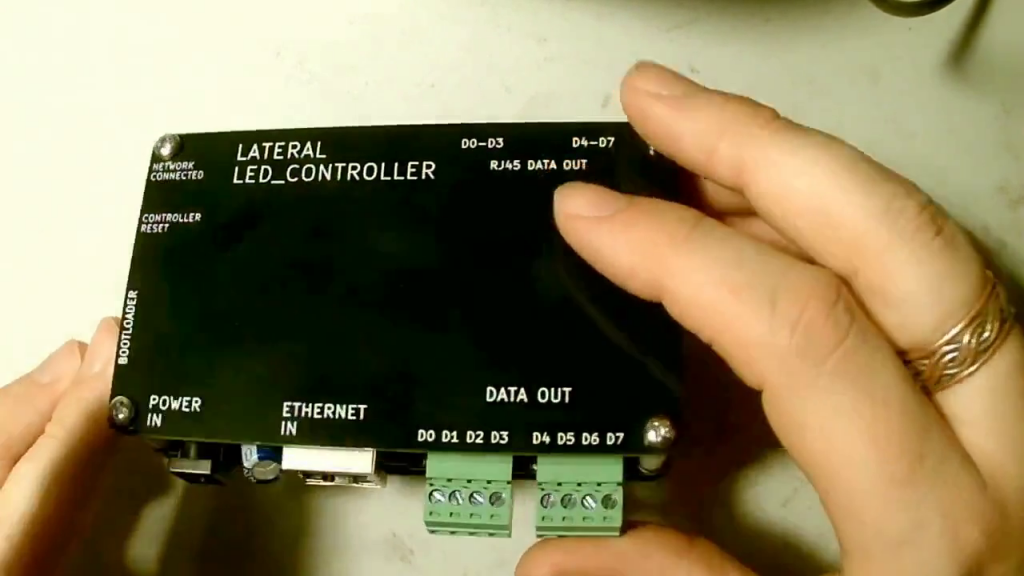
this is another release in the series of open-source tools for video installation work i have been developing and is a companion to the artnet_led_mapper software that is also being released today.
the lateral_led_controller converts art-net sent over wired ethernet into the protocol used for addressable leds. it can be combined with mapping software to send arbitrary video onto an led strip canvas:

this circuit is based on the custom hardware i designed for lateral movement – a semi-irregular club night showcasing left-field & experimental dance music and light

i made a demo video showing how to use this controller to set up an addressable led installation like these – you can check it out here:
addressable leds
its currently compatible with the two main families of addressable led strips (but more can easily be added via firmware updates):
- the WS281X (neopixel) which is a cheap but slow single wire protocol, which the controller can support up to 8 parallel outputs
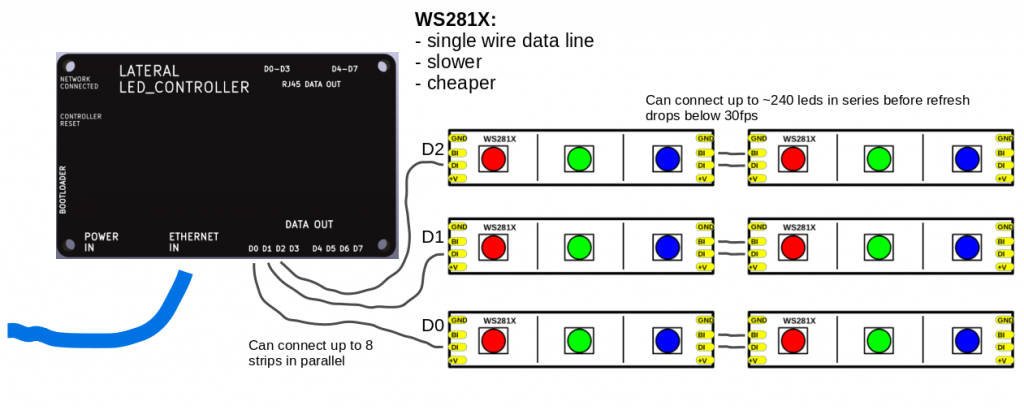
- the APA102 (dotstar) which is a faster two wire protocol – a single data line plus clock line can control up to the 2000 recommended pixels
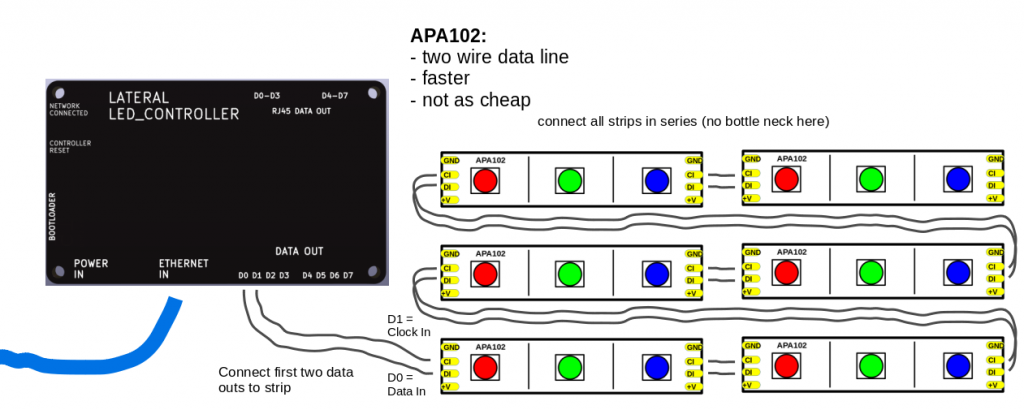
motivation
this product is a bit different from the video instruments we usually focus on for underscores releases – unlike those, there are many led controllers already on the market. however when researching options for our club nights (just over a year ago now) we didnt find anything suitable in our price range.
all the existing led controllers we looked at were either:
- very expensive professional gear
- only supported a couple of universes (ie <500 pixels)
- designed for home use with only wifi options ( we need a wired ethernet connection for use in a crowded venue)
i wanted to design a controller specifically made for the kind of video-art installation work we were doing
new alternatives ?
interestingly enough there does appear to be some more affordable options for generic wired ethernet led controllers coming out of china these days such as this H807SA (and a few others i could see on ali)

i have not tested any of these myself so do not know how/if they work – i would be curious to hear from anyone who has however!
regardless i believe it is still worth releasing open source and artist made alternatives where possible. the main advantage to using an open source controller is that we can fine-tune it to our specific needs rather than relying on a black box – this also future proofs us – if a better led strip with a new protocol comes out we can update the open-source firmware and continue using our existing hardware.
circuit modules in the design
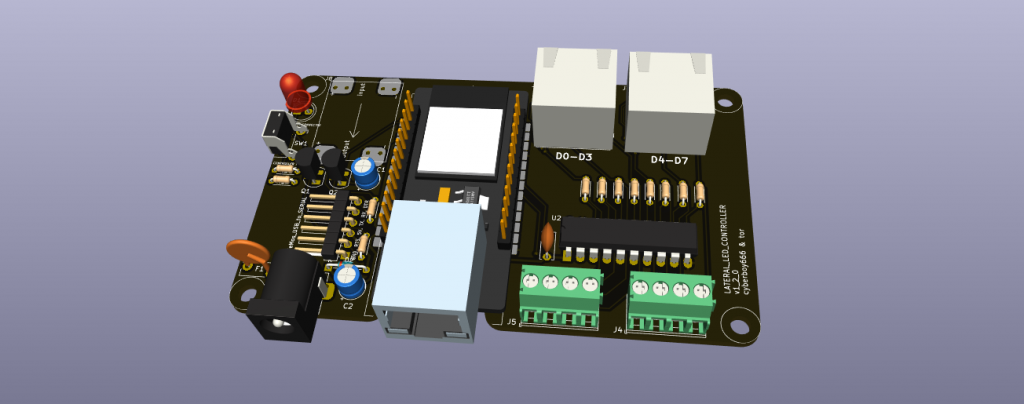
one interesting thing about this hardware design is that it is made up of a few existing circuit modules. besides the WT32-ETH01 micro-controller there is also the MP1584EN_5v_stepdown module and the WeMos_CH340G_USB_to_SERIAL module:

the main advantage of this approach is that we can use smd parts while still keeping the project diy friendly. also sometimes it works out cheaper to source these premade modules than the individual parts since they are purchased and assembled in large batches and then resold. however it can feel more “hacky” and make sourcing parts for the project harder in the long term (if these particular modules become less available)
this project started as an adaption from a in-house one-off solution i designed and the use of these modules in it reflects this – if it proves to be popular enough and useful to others outside of this i may consider a future revision which is made up directly from the smd parts it needed – time will tell!
the local web interface
another cool feature of this controller is the local web interface for easily configuring network / led settings:
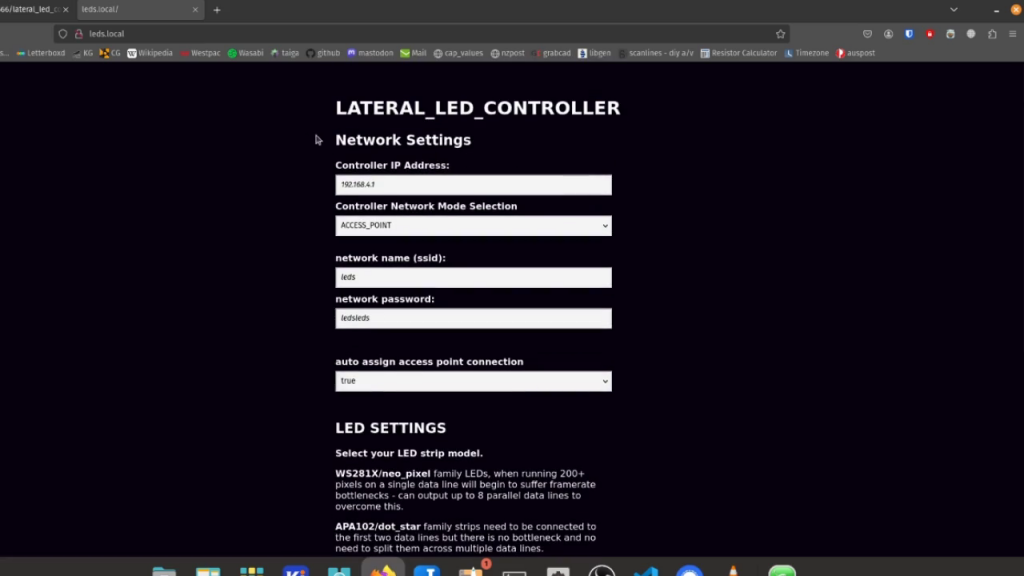
by joining a wifi access-point created by the controller we can access all the settings required on our computer / phone
i found this to be a nice way to configure a micro-controller without needing to edit code or dive deep into a tiny menu – im excited to use this approach again for other micro-controller projects i work on!